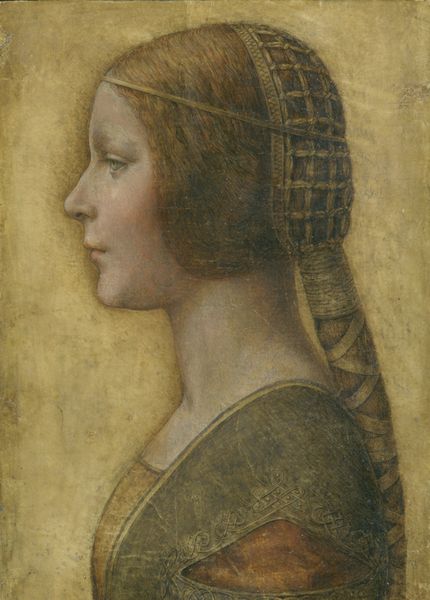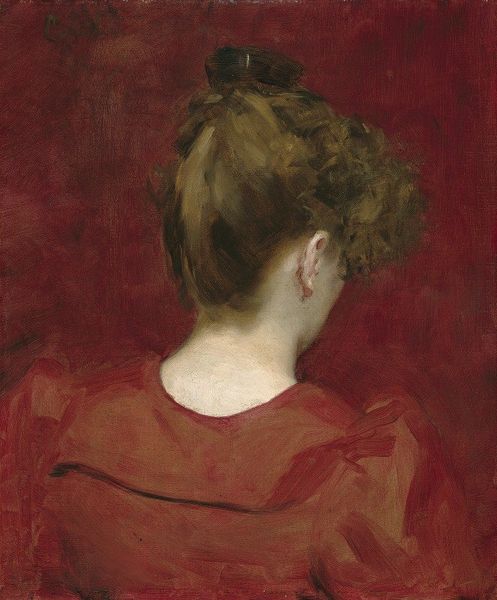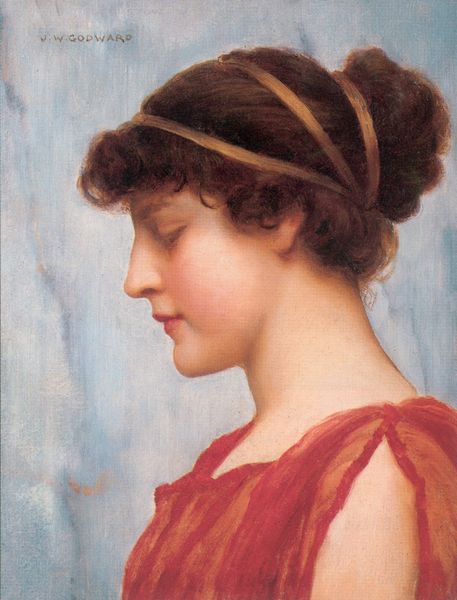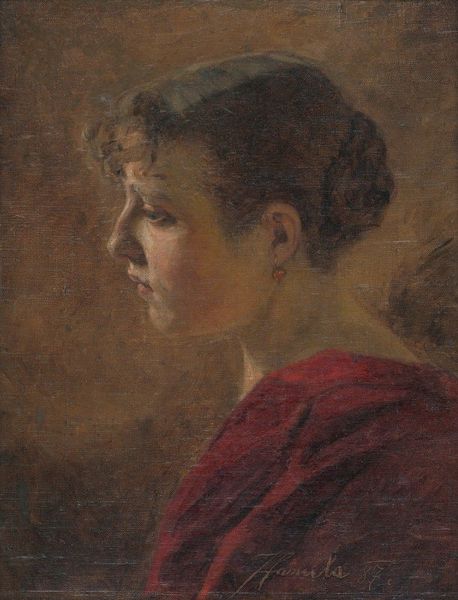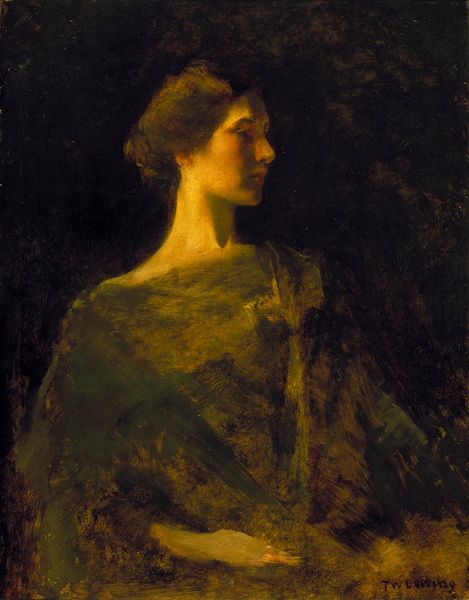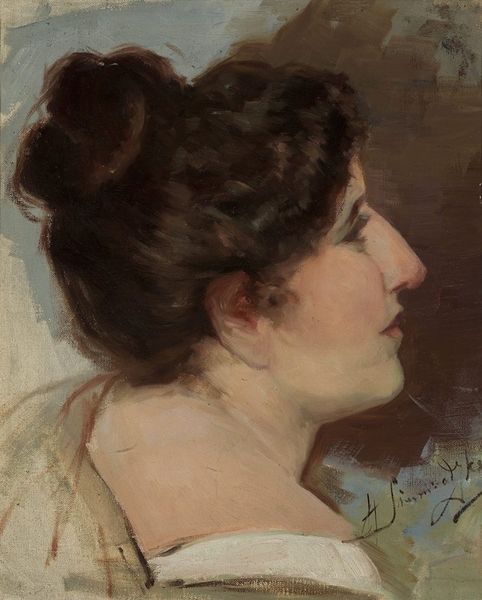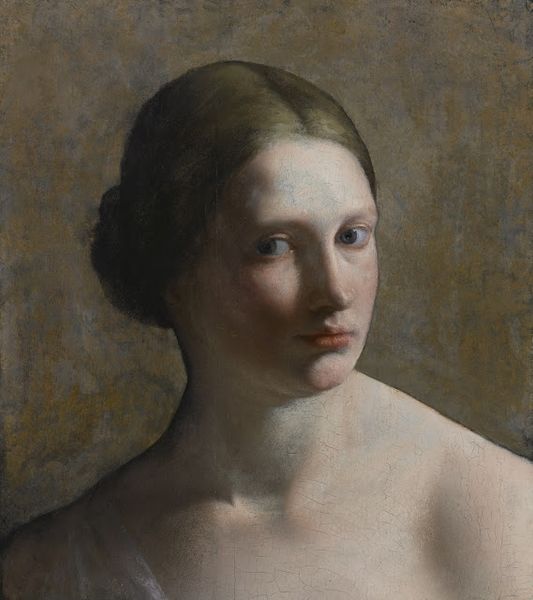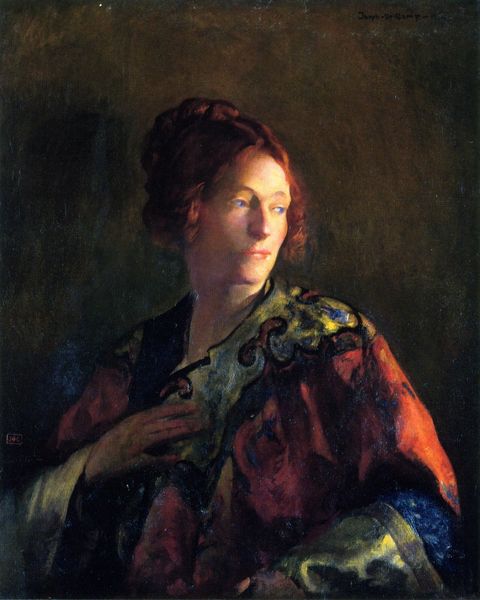
painting, oil-paint
#
portrait
#
painting
#
oil-paint
#
figuration
#
oil painting
#
portrait head and shoulder
#
portrait drawing
#
academic-art
#
portrait art
#
fine art portrait
#
realism
Copyright: Public domain
Curator: Joan Brull's oil painting, "Girl," immediately strikes me with its luminosity, almost an icon-like quality due to the shimmering golden background. What catches your eye? Editor: The overwhelming sense of privilege emanating from the portrait is hard to ignore. This isn't just any girl; her very pose exudes access and belonging, carefully constructed through the painter's gaze. Curator: The profile view is deliberate. Consider its historical connotations; profile portraits often denote nobility or an ideal. Think of Roman emperors on coins or Renaissance depictions of idealized women. Editor: Absolutely, and that informs her detachment. Her gaze avoids ours, positioning her outside the concerns of ordinary people. The choice of color contributes: gold signifying wealth, red historically associated with power. Who gets to be immortalized like this, and why? Curator: But the gold also alludes to something more spiritual. Gold leaf in religious icons represented divine light, the presence of the sacred. Brull seems to imbue the subject with a certain untouchable aura, almost venerating her. Editor: I find that concerning because this veneration likely rests on social and economic hierarchies. By using these loaded symbols, Brull might unintentionally perpetuate an exclusive ideal, glorifying inequality under a guise of beauty. Curator: It’s a fine line, isn’t it? I see her more as an archetype, an idealized vision of feminine beauty, which Brull, working within the late 19th and early 20th century Symbolist movement, frequently explored through representations of women and nature. Editor: Archetypes themselves can reinforce cultural expectations, particularly around gender. The submissive pose, the demure expression... all arguably contribute to an image of feminine ideal aligned with patriarchal values. Curator: True. The symbols here aren't straightforward; their meaning relies on our reading, and that, of course, is influenced by the present moment. Editor: Exactly. Engaging with these paintings requires unpacking the ideologies embedded within the very aesthetic choices, forcing us to recognize who has historically controlled the narrative of beauty.
Comments
No comments
Be the first to comment and join the conversation on the ultimate creative platform.
